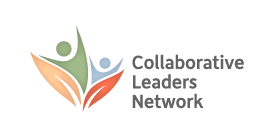By talking with widening circles of sponsors, funders and stakeholders, the facilitator can gauge the nature of the conflict and its possibilities for a cooperative process. Based on the assessment, a process design and choreography for the project can be discussed with individuals before the group meets, and then again brought to the table in more formal terms when the process convenes for its first meetings in Stage 2. These elements are part of an assessment:
- Representation. Who will be the primary representative of a particular group and who will be the alternate? Is there anyone else who needs to attend meetings?
- Signing. Who will have the authority to sign any agreement that emerges? Who needs to be consulted internally before that happens and who will make the ultimate decision?
- Clarity about the problem. Imagine sitting next to someone on a long plane ride and being asked to explain why this set of issues is so vexing and why everyone is so worried or nervous. Explain the problem to a non-expert in lay terms.
- The goal of the dialogue. Assume for the moment that the dialogue is fully successful and a solid set of agreements is reached. Describe the level of generality or specificity of those recommendations. Can they be captured in a 5, 10, or 20-page document? Do they present core principles or new laws, language for specific legislation, or something in between? Offer an example of what some of those recommendations might sound or look like.
- The issues. There are quite a few different considerations to be thought though. What are some of the questions this dialogue should answer?
- Top priority. Specifically, which issue is at the top of people’s lists? What is most important to their constituents? What needs to be delivered to constituents even as the needs of others at the table want to be met?
- Easier issues. Look around at the different groups that may be in the room. Which issues might be “low-hanging fruit?” (These are matters that, with a bit of focused discussion, can probably reach agreement.)
- Tougher issues. What will be the toughest issue the group will have to address and reach agreement on? Why is that one so hard? What will a particular group’s views be on those issues and what might be a “showstopper?”
- Positions/proposals. At the right moment, are there specific proposals that a participant is ready to float? Do the other associations represented already know that participant’s views and positions? What are they and how can the process ensure these ideas get thorough consideration? When is the appropriate time to roll out proposals?
- Friends and adversaries. Who will likely be the chief allies or opponents on which issues?
- Nature of the differences. What will likely prove to be most difficult in the forthcoming discussions: Philosophical differences? Technical disputes (conflicting data)? Old baggage from other fights? Personality differences? Money?
- Sequencing issues for discussion. Assuming that everything is connected and contingent until the end when everyone can see all of the pieces of a whole package, how should issues for discussion be sequenced: take the harder ones first or try to pick off the easier ones?
- Working groups. Assuming things get started on the right foot, are there logical smaller work teams that could be put in place?
- Deadlines. What are the real deadlines and backstops for this dialogue and negotiation?
- Plenary sessions. The first plenary meeting may need (an hour, a morning, a day, a day and a half) and after that (one hour, half-day, full day) sessions. Does this make sense? If not, what are other proposals?
- Steering committee. Would a small steering committee or some co-chairs for the process be helpful?
- Ground rules. Above and beyond the general rules of civility, how should each of the following work: confidentiality and contact with others not in the group; outside inquiries (especially from other groups not represented); inquiries to or from politicians.
- Decision making. There are different ways to manage how to reach agreements or consensus. Often, a 1 to 5 consensus polling tool is used, with a goal of getting everyone to 3 and above and backstopped by a supermajority vote if required. What are some suggestions in terms of group decision making?
- Consequences. What will happen to individuals and their colleagues from other groups and agencies if no agreement is reached, or if there is a weak agreement on peripheral issues? What are the political, economic, and professional consequences of not succeeding fully in this effort?
- Facilitator’s role. How can the facilitator(s) be most helpful? Is there anything more that would be helpful to know about the facilitator(s) individually or about the organization?
- Communicating views. If there is one thing participants absolutely want others in the room to know and remember about how their association sees things, what is it?
- Process name. What might be the right name for this process? Should it be called a “dialogue,” a “work group,” a “roundtable,” or something else?
- What else? Is there something else participants should be asked or would like others to know?
